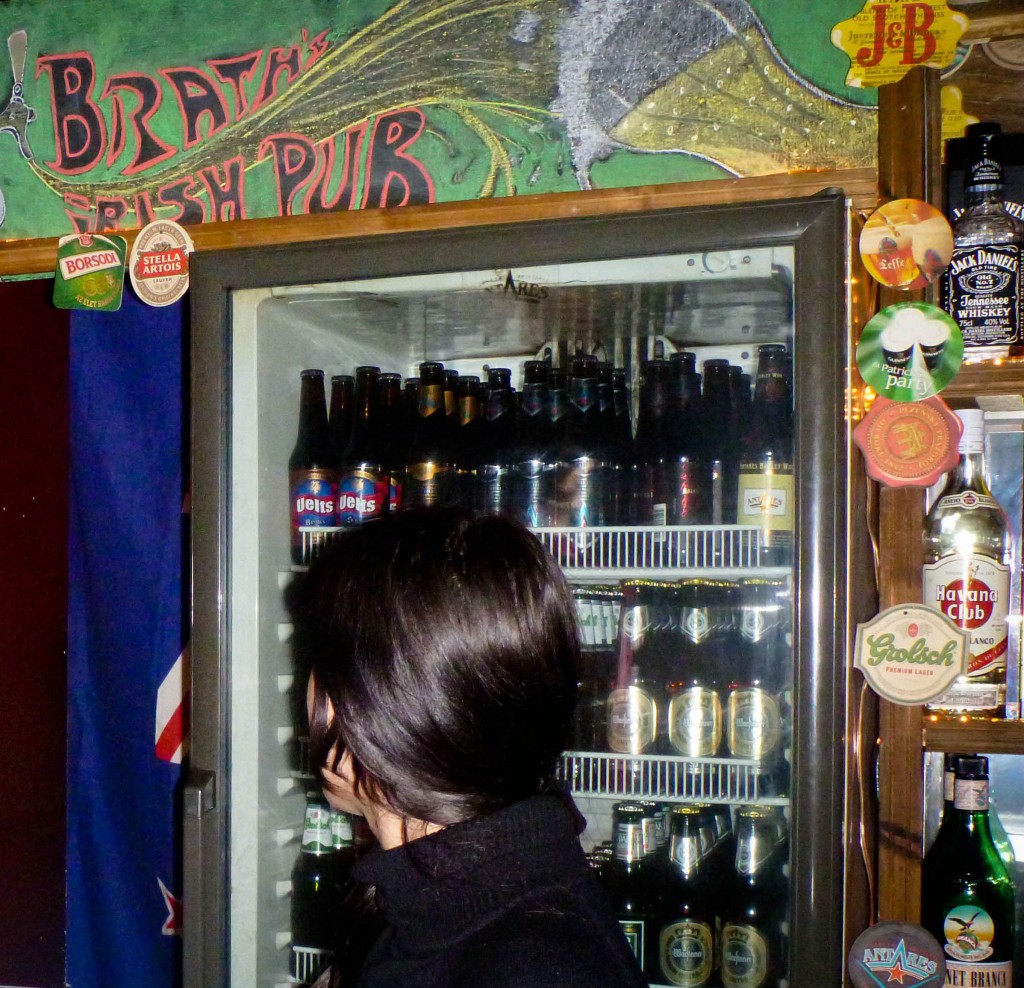When we first visited Buenos Aires at the start of our trip, Angela, our delightful Airbnb host, warned us against accepting fake bank notes as this is a common problem in Argentina, particularly in Buenos Aires. She told us that dark bars, clubs, taxi drivers, and sometimes even ATMs could issue unwitting tourists with fake notes, and then she showed us a selection of notes and told us what to look out for in a fake (check out her own post on the issue here). When given any large denomination notes you should look out for a clear watermark, a complete silver line running vertically through the note and check the quality of the paper. Some of the fake banknotes also have ‘bleeding’ around the letters where the ink has run. You would think that we were armed and ready to spot any counterfeit note that might come our way. You would think.

On our second visit to Buenos Aires, we decided that it was time to meet some other backpackers and find the infamous party scenes that had eluded us so far on our trip. With this aim we checked into a hostel (which turned out to be empty) and signed up for the Buenos Aires Pub Crawl. The pub crawl is advertised in every hostel in the city and takes place in a different area of the Argentine capital each night of the week. We signed up to the Monday San Telmo crawl.
We had already paid 100 pesos for the crawl, which started off with an hour of unlimited pizza and beer at Zapi’s pizza and, as we had been told that we would get deals on drinks for the rest of the evening, we left our hostel armed with 300 pesos in crisp 100 peso notes, all of which had passed the counterfeit note test. Brath’s Irish bar was our first stop after the pizza joint and this is where we began paying for drinks. Dark, dingy and completely empty, it did not look inviting. We were offered our first ‘shot’ – a cheap vodka and coke. After that we had to pay. Nicklas went up to buy our first round; a beer and a glass of wine. The bar did not serve wine, which struck me as a bit odd in any bar but truly unbelieveable in a bar in Argentina, so I had to buy a small bottle of warm champagne which had probably been sitting on the shelf for years. When he next went to the bar he used the 50 peso ($11) note that they had given him in his change moments earlier.
Then the fun began.
The bar staff scrutinised it closely and handed it back as a fake. We hurriedly performed the tests that Angela had shown us weeks before, there could be no doubt about it – it was most certainly a fake and a bad one at that. Yes, we should have checked and the onus was completely on us but indignant about the fact that the note had been given to us by them we tried to complain. Of course our complaints didn’t get us anywhere as they were fully aware that they had passed the note onto us but are hardly likely to admit it. We refused to buy any more drinks in the bar and after telling everybody else on the crawl what had happened they would not buy anymore either.
It is some justice to think that the bar lost more than 50 pesos of business for their deceit.

I am not writing this post to reflect badly on the Buenos Aires Pub Crawl which is well organised and the team were sympathetic to what had happened, I am writing it to remind travellers out there to check any notes that you receive – especially in bars where it is dark and alcohol tends to make people less likely to check their change.
If this is the only scam I am victim to in South America then I will be very happy, and it has put me back on my guard. Hopefully next time I’ll be able to refuse a counterfeit note at the source.
Have you ever received a fake note? Where did you get it from, what did you do with it? Tell your story in the comments below. If you think this warning might benefit other travellers then share it! Thanks






That’s absolutley awful. I am glad that you got back at them somewhat by taking away their business that night!
It must be hard to recognise fake notes especially if you are travelling from country to country, but I guess the poor unsuspecting tourist is an ideal target.
Hope it doesn’t happen again Elaine!
Jordan recently posted..My New Love
If I have in the 5 months I’ve lived here, then I unknowingly passed it on to someone else
But I have been warned about this repeatedly. Good for you to call them out on it and let people know which bar is taking advantage of people.
Stephanie – The Travel Chica recently posted..Spring is Here!
As long as people are checking their change then this will not be a problem for many, it’s just hard to remember to do it after a few Mojitos!!
Hi
We treated ourselves to a night out at the opera and took a taxi to the theatre. We handed over a 100 peso note for the trip of around 25 pesos and the young taxi driver hesitated a bit when handing my change which I thought a bit strange at the time. But took the change offered and went into the theatre. We were early so sat in the coffee shop for a quick bite – when we went to pay the 50 peso note I had received in change from the taxi driver was fake and also another 20 peso note. So it pays to use small notes for the taxi drivers and be especially careful of the younger drivers.
Cheers Deb
Deb Hocking recently posted..Iguazu Falls – WOW!!!
Thank you for your comment. I have heard that taxis can sometimes be a problem for fake notes, I’m sorry to hear that this happened to you too. You are right that small change should be used in all taxis, I’ll be careful with taxi change from now on!
[…] Warning: Fake Notes in Buenos Aires […]